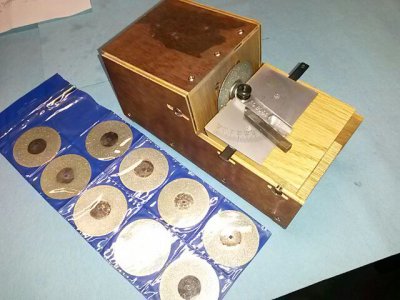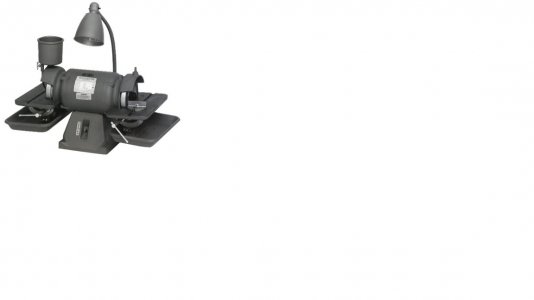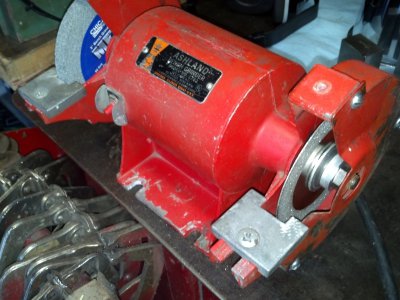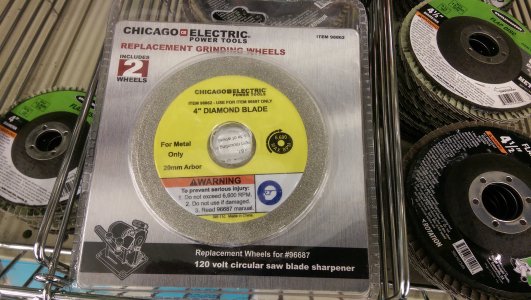- Joined
- May 20, 2014
- Messages
- 191
About a dozen years ago I bought a glom of budget 1/4" braised carbide bits, and the set of braised carbide boring bits. They were all dull, and had goofy angled convex faces. My existing carbide bits needed dressing, and these new ones were supposed to solve that.
Fast forward a few years, I find these 2" diameter diamond disc-wheels on eBay, pack of 10 for about $20, if I recall correctly. Recommended rpm of 3000.
There's a few articles on small homebuilt sharpening stations out there for inspiration. So, made a dc motorized sharpening station. Modified a stainless steel protractor as a sliding mitre base. No heat or severe loads here, so made it out of wood.
Didn't want to do the complicated tilting mitre table thing, so this mitre table stays flat, the motor/disc assembly tilts to the desired angle. Normally leave it at 8° back tilt. Can freehand on it too, handy for those boring bar bits.
It rapidly removes carbide, leaves an almost-fine finish. Works well on HSS too.

Fast forward a few years, I find these 2" diameter diamond disc-wheels on eBay, pack of 10 for about $20, if I recall correctly. Recommended rpm of 3000.
There's a few articles on small homebuilt sharpening stations out there for inspiration. So, made a dc motorized sharpening station. Modified a stainless steel protractor as a sliding mitre base. No heat or severe loads here, so made it out of wood.
Didn't want to do the complicated tilting mitre table thing, so this mitre table stays flat, the motor/disc assembly tilts to the desired angle. Normally leave it at 8° back tilt. Can freehand on it too, handy for those boring bar bits.
It rapidly removes carbide, leaves an almost-fine finish. Works well on HSS too.





